We’ve used generative artificial intelligence to learn about the last great scientist of the ancient age in the western world.
Hypatia of Alexandria was an accomplished astronomer, mathematician, and philosopher who lived in the final days of the ancient age of science. Born sometime around 360 CE, Hypatia was raised in the cultural and intellectual center of the Mediterranean, Alexandria, by her mathematician father Theon.
Hypatia dedicated her life to advancing science and reason in an age when dark forces were closing in on her society.
The Great Library of Alexandria, founded just after 300BCE, was once the greatest storehouse of information in the ancient world. The Library was one part of a larger institution of learning, the Musaeum of Alexandria, which also included a grand university.
The root of our English word museum, the term Musaeum originally referred to temples honoring the Muses. Over time, this word came to represent centers of learning.
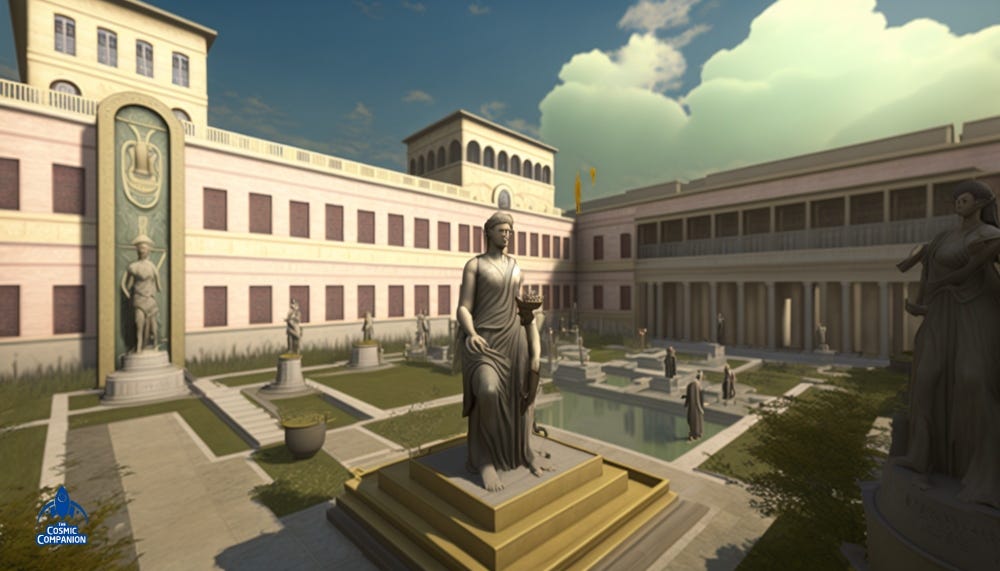
At the start of the Fifth Century, in the final years of the Alexandrian University, Theon raised his budding scientist in the manner usually reserved for boys — in the father’s trade — in this case, math and science. History leaves us no knowledge about Hypatia’s mother.
Living her life in the cultural and intellectual center of the Mediterranean, Alexandria, Hypatia attended classes and later taught on the ancient grounds of learning, delivering understandable lessons on complex scientific subjects.
Notes based on her teachings are said to cover astronomy, geometry, the use of astrolabes, and more. Hypatia taught classes, some of them to large audiences. Ancient accounts are nearly unanimous in noting her intellectual prowess.
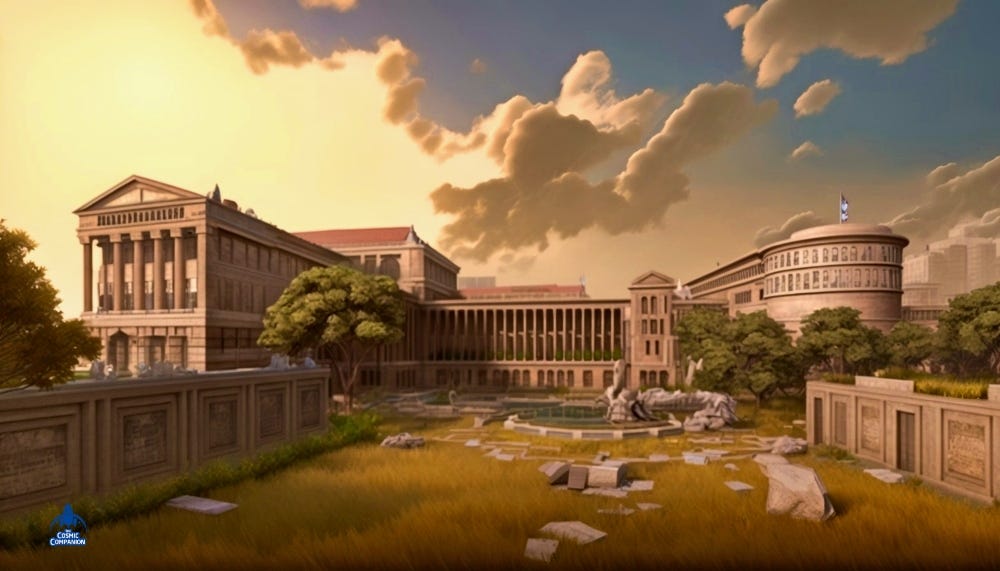
She was a gifted science educator and her works were reported to contain insights on astronomy, geometry, the use of astrolabes, and more.
Even her rivals often admired her talents, including John of Nikiu, who stated, “The breadth of her interests is most impressive. Within mathematics, she wrote or lectured on astronomy, geometry, and algebra, and made an advance in computational technique — all this as well as engaging in religious philosophy and aspiring to a good writing style.”
Not a bad review from someone who really doesn’t like you.
As violence between Christians, Jewish residents, and Pagans grew, Hypatia assigned herself the task of updating, recording, and safeguarding the mathematical and astronomical knowledge of her age.
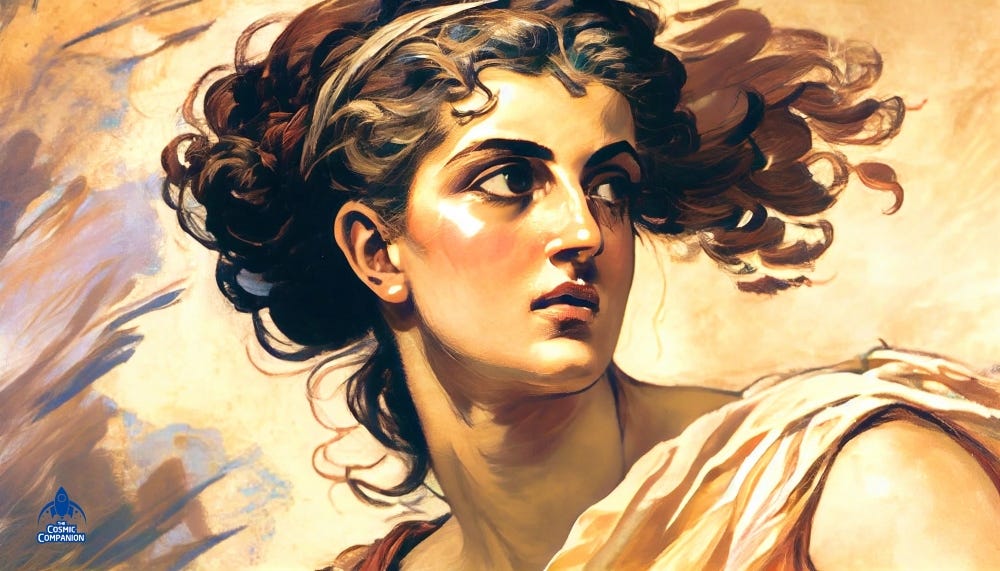
Her fate was sealed in 391 CE, when Emperor Theodosius I issued a decree directing the burning of all Pagan temples. Armed with this acquiescence, Theophilus, bishop of Alexandria, ordered that the center of learning be destroyed. He and his followers carried out the decree, dealing massive destruction to the grounds. Theophilus then ordered a church to be built on the site.
More than 20 years later, in the year 412, he ordered the pillaging of the Serapeum or Temple to Serapis, the Pagan protector of Alexandria. This would prove prophetic.
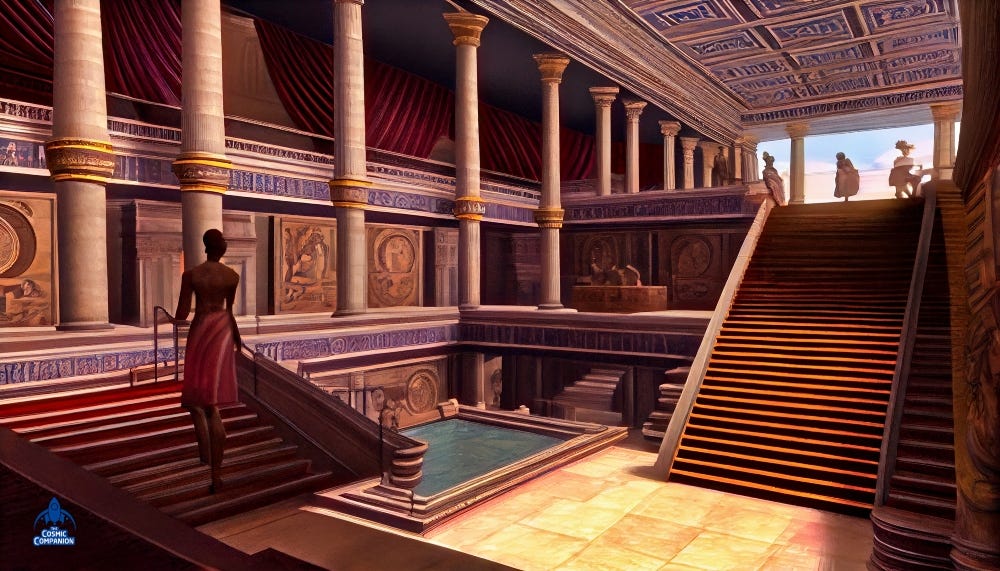
Cyril, Theophilus’s nephew, was named bishop of the region, and he launched a campaign against Pagan temples and set about expelling the Jewish population from Alexandria. Civil unrest between Pagans, Christians, and the Jewish population broke out into years of violence in the city.
In March 415, followers of Cyril ransacked the remaining classrooms and study rooms, destroying what remained of the greatest institution of learning in the ancient world.
The crowds ambushed Hypatia as she rode through the city. The last great scientist and science educator of the ancient western world was flailed, dismembered, and her remains were paraded through the city and burned in a mockery of Pagan funerary rites.
Hypatia’s brutal murder marked the end of science in the west for a thousand years. Europe soon fell into ten centuries of intellectual stagnation that would not lift until the Scientific Renaissance in the middle of the 15th Century.
Today, Hypatia stands as an example to all science educators to connect with their audience and with those around us. She also broke the gender barrier for science in ancient Europe, an accomplishment for feminism and women that would not be matched until the 18th Century.
Hypatia of Alexandria dedicated her life to exploring the mysteries of the Cosmos, and relating her knowledge so that everyone could understand and learn. As darkness closed in on Alexandria, Hypatia spread the light of science for all humanity, and all time.
She remains an inspiration to us all.
How this was done:
We do not know exactly what Hypatia of Alexandria or the institution looked like, but there are descriptions in ancient texts, as well as modern insights based on contemporary technologies and insights into history and genetics.
The Cosmic Companion used Chat-GPT to merge information from both ancient and modern sources into the most accurate description of her we could produce.
Facts were checked and cross-referenced with accounts from reliable sources, including Encyclopedia Brittanica, The Smithsonian Institution, and National Geographic. The resulting text was translated, as closely as possible, into a prompt for the artificial intelligence graphics engine MidJourney.
Text was created by a similar AI/human process.
Thanks for being a subscriber - you brighten our days (but not our nights, because that would be light pollution)!
Clear skies,
James
P.S. I initially set this mailing so that VIP subscribers would receive it on Saturday, and free subscribers on Sunday. But limitations on the software made it necessary to send this out to everyone on Sunday, including VIP members. Sorry for the inconvenience!



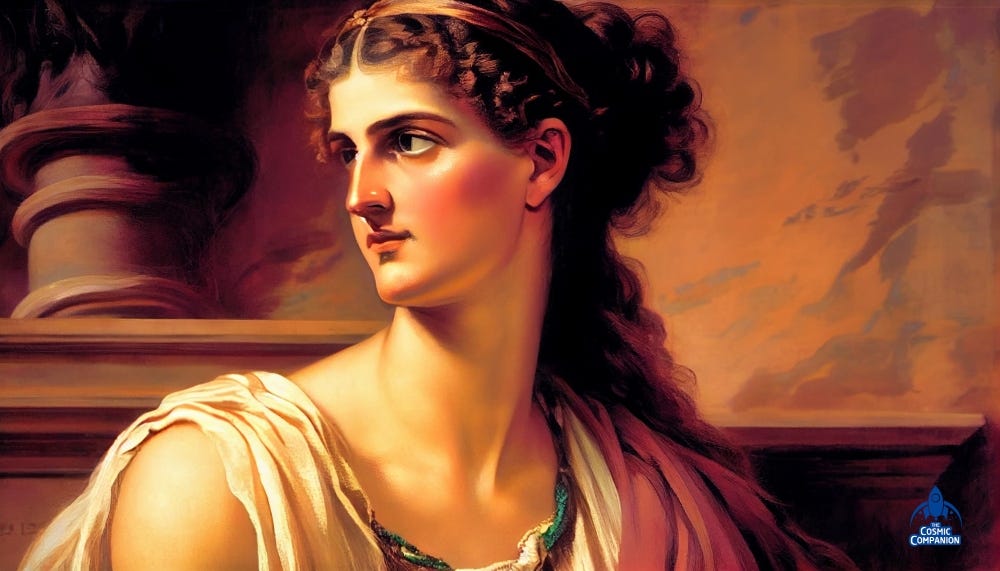


Reconstructing Hypatia of Alexandria Using Artificial Intelligence